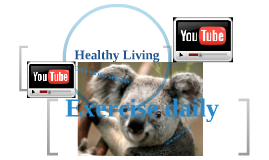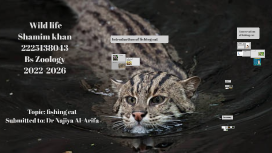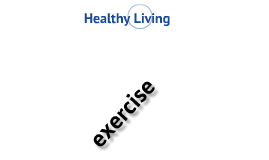Interactive PowerPoint on Healthy Living
Transcript: Definition of Healthy Living Introduction to Healthy Living Healthy living is a holistic approach that integrates physical, mental, and social well-being. It involves making conscious choices to enhance overall health through balanced nutrition, regular exercise, and positive mental health practices. Understanding healthy living encompasses various essential factors, including balanced nutrition and physical activity. Adopting a healthy lifestyle leads to improved well-being and quality of life. Overview of Healthy Living Principles Core principles of healthy living include regular physical activity, balanced nutrition, sufficient hydration, adequate sleep, and effective stress management. These elements collectively work to enhance physical and mental well-being. Importance of a Healthy Lifestyle A healthy lifestyle significantly reduces the risk of chronic diseases such as obesity, diabetes, and heart disease. Furthermore, it fosters a higher quality of life, enhances mental clarity, and improves resilience against stress. Importance of Hydration Healthy Snacking Options Meal Planning Tips Hydration is vital for maintaining bodily functions, including temperature regulation and nutrient transport. It is recommended to consume at least eight 8-ounce glasses of water per day. Snacking on nutrient-dense foods can boost energy and prevent overeating at mealtimes. Options include fruits, nuts, yogurt, and whole-grain crackers, which provide essential nutrients without excess sugar. Effective meal planning helps maintain a healthy diet and saves time and money. Preparing meals in advance, incorporating a variety of foods, and using a grocery list can enhance nutrition. Understanding Food Labels Balanced Diet Essentials Food labels provide essential information regarding ingredients, nutritional content, and serving sizes. Learning to read labels is crucial for making informed dietary choices and managing health. A balanced diet includes a variety of foods providing essential nutrients. Key components are carbohydrates, proteins, fats, vitamins, and minerals, consuming them in the right proportions is vital for health. Nutrition and Diet Nutrition and diet play a crucial role in maintaining overall health and well-being. A proper understanding of nutrition principles can greatly impact energy levels, immunity, and longevity. Interactive PowerPoint on Healthy Living Guidelines and Tips for a Healthier Life Setting Fitness Goals Setting specific, measurable, achievable, relevant, and time-bound (SMART) goals is crucial for success in fitness. This approach provides clarity and motivation, leading to better adherence to exercise routines. Incorporating Movement into Daily Life Incorporating physical activity into daily routines can be achieved by taking the stairs, walking or cycling instead of driving, or engaging in yard work. These small changes contribute significantly to overall health and fitness. Types of Physical Activities Physical activities encompass a wide range of options including aerobic exercises, strength training, flexibility workouts, and recreational activities. Regularly alternating between these types ensures comprehensive fitness development. Understanding Physical Activity Benefits of Regular Exercise Physical activity is essential for maintaining overall health and well-being. Engaging in regular exercise not only enhances physical fitness but also supports mental health, contributing to a balanced lifestyle. Regular exercise optimizes cardiovascular health, strengthens muscles, and supports weight management. Furthermore, it boosts mood through the release of endorphins, reduces the risk of chronic diseases, and improves life expectancy. Stress Management Techniques Importance of Sleep Quality sleep is essential for overall health, impacting cognitive function and emotional regulation. Adults typically need 7-9 hours of sleep per night for optimal health, while poor sleep can lead to various health issues, including anxiety and obesity. Effective stress management techniques include regular physical activity, deep breathing exercises, and time management skills. Engaging in hobbies and spending time with loved ones can also reduce stress levels and promote relaxation. Mindfulness and Meditation Mindfulness and meditation are practices that promote mental clarity and emotional resilience. Research shows that regular mindfulness practice can decrease anxiety, enhance focus, and improve overall mental health. Mental Well-being: The Foundation of Healthy Living Mental well-being is crucial for a balanced and healthy life. It encompasses stress management, quality sleep, mindfulness practices, and healthy relationships, all of which are key components in enhancing overall health. Building Healthy Relationships Healthy relationships provide emotional support and enhance mental well-being. Communication, trust, and empathy are key factors in nurturing these relationships, which can lead to lower

















